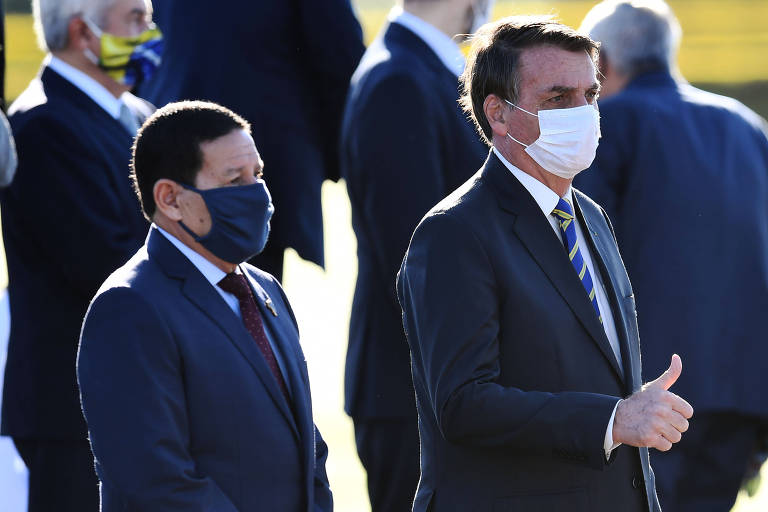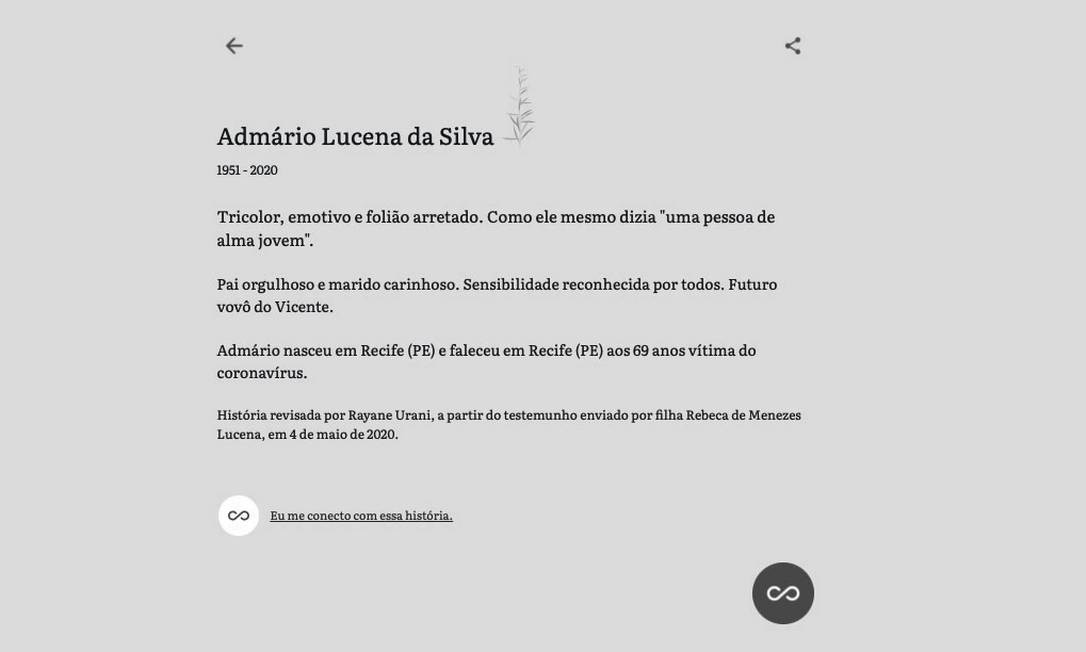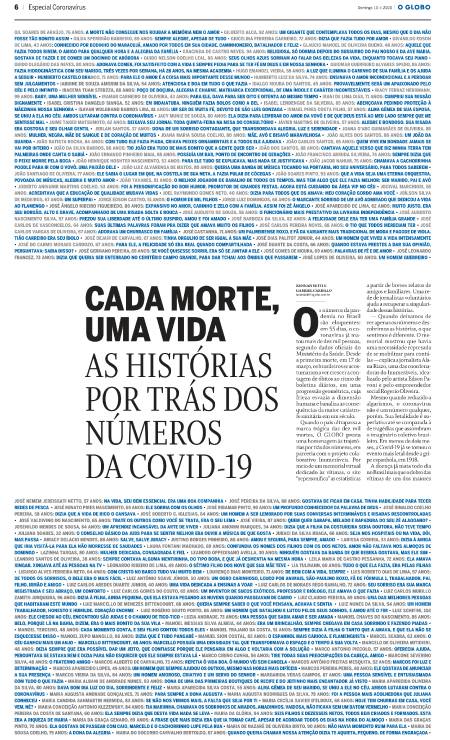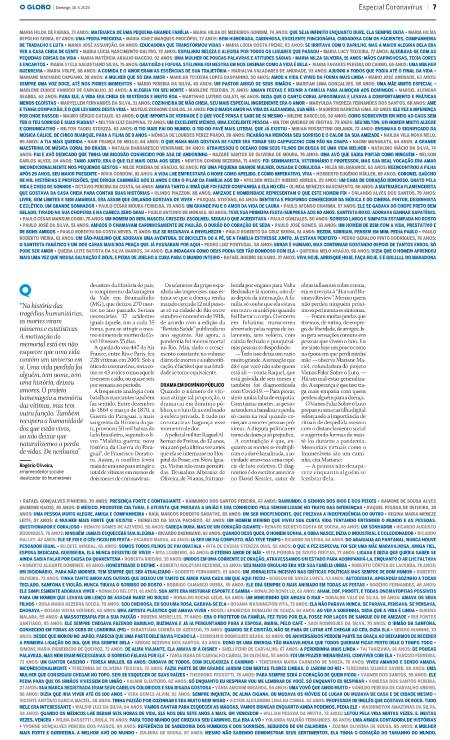/https%3A%2F%2Fconteudo.imguol.com.br%2Fc%2Fnoticias%2Fef%2F2020%2F05%2F28%2Feduardo-bolsonaro-no-programa-terca-livre-1590668002081_v2_450x450.jpg)
Reinaldo Azevedo
Os deputados Eduardo Bolsonaro (PSL-SP) e Bia Bia Kicis (PSL-DF) fizeram na noite desta quarta a transmissão do "Terça Livre", um programa na Internet comandado pelo militante bolsonarista Allan dos Santos, investigado no inquérito sobre fake news.
Olavo de Carvalho participava lá da Virgínia, nos EUA. O deputado deu como certo um golpe de estado no Brasil -- só a data não estaria definida -- e disse que altas autoridades estão discutindo o assunto. Sim, é isto mesmo. Afirmou:
"Eu até entendo quem tenha uma postura mais moderada, vamos dizer, para não tentar chegar em um momento de ruptura, um momento de cisão ainda maior, um conflito ainda maior. Eu entendo essas pessoas que querem evitar esse momento de caos, mas, falando bem abertamente, opinião do Eduardo Bolsonaro: não é mais uma questão de se, mas de quando isso vai ocorrer".
O deputado deu a entender que as articulações para o golpe estão em curso:
"Não se engane, as pessoas discutem isso. Essas reuniões que o Allan está falando, entre altas autoridades, até a própria reunião dentro de setores políticos, eu, Bia, etc. A gente discute esse tipo de coisa, porque a gente estuda história, a gente sabe que a história vai apenas se repetindo. Não foi de uma hora para outra que chegou a ditadura na Venezuela".
Então saibam todos vocês: em algum momento, seremos governados, segundo Eduardo, pela ditadura da Família Bolsonaro, escorada, suponho, nas Forças Armadas...
Olavo, a propósito, disse ontem que Alexandre de Moraes tem de ir para a cadeia, ser proibido de falar e condenado à morte. Por quê? Porque ele seria um... "genocida"!!!
O médico bolsonarista Ítalo Marsili também participou. É aquele rapaz que diz ter reprogramado a mente de um pedófilo escolhendo para ele prostitutas com cara de criança; que sustenta que a gerência do Estado piorou depois do voto feminino porque mulher se deixa seduzir com facilidade e que acha inconveniente ter um "papa negão".
Todos "estudam história". É a elite intelectual do golpe, suponho.
Eduardo é ambicioso. Disse que não basta suspender o inquérito sobre ações criminosas no STF. Ele exige punição para o ministro Alexandre de Moraes. Também atacou Celso de Mello, que teria ameaçado levar generais para depor "debaixo de vara". Ele, obviamente, não conhece o sentido que tem a palavra em direito. Ou finge não conhecer, sei lá eu.
Notem que Eduardo é ate condescendente com quem não quer a ruptura, mas ele acha um erro. Está incitando os miliares.
Bem, meus caros, o rapaz é filho de quem é: o pai confessou na reunião ministerial do dia 22 de abril que está armando a população tendo como horizonte a guerra civil.
E, claro!, Augusto Aras, procurador-geral da República, não vai mover uma palha. Ou vai: ele quer extinguir o inquérito no STF. Há quem entenda que o Artigo 53, que garante a imunidade a parlamentares por "opiniões, palavras e votos" lhes dá o direito de praticar crimes.
É um jeito de ver o mundo. É a conhecida tolerância com os intolerantes, que, se vencerem, porão fim à tolerância.
Eduardo quer ação:
"A gente não pode permitir que isso aconteça. A gente tem que diagnosticar o problema, deixar a sociedade ciente do problemas e depois tomar algumas atitudes, porque é inadmissível isso que o ministro Alexandre de Moraes e Celso de Mello tão fazendo com a democracia brasileira"
Não deixou claro que atitude pretende tomar. Já há um acampamento, em Brasília, com pessoas armadas, segundo a sua coordenadora, Sara Winter.
Dado o número de baixas no bolsonarismo com menos de um ano e meio de governo, recomendo que Aras e André Mendonça — os novos arautos da liberdade de expressão — e a fatia do Centrão que resolveu lucrar com o governo não se sintam antecipadamente como os barões do novo regime.
Todos eles são candidatos à guilhotina. O bolsonarismo já é tarado por cabeças antes da revolução... Imaginem depois dela.
É evidente que Eduardo e Bia Kicis deveriam ser processados pelo Conselho de Ética da Câmara e cassados por seus pares. Mas não serão.
Quando foi que se viu algo parecido no Brasil?
Eduardo tem razão numa coisa: não se fez uma Venezuela da noite para o dia. Houve tolerância em excesso com o candidato a ditador, que também governou ancorando-se nas Forças Armadas.
Parte considerável da elite vê agora onde amarrou seu jumento.
Eis aí: segundo Eduardo, o golpe é fatal, e "as pessoas discutem isso".
Quais pessoas?
Olavo de Carvalho participava lá da Virgínia, nos EUA. O deputado deu como certo um golpe de estado no Brasil -- só a data não estaria definida -- e disse que altas autoridades estão discutindo o assunto. Sim, é isto mesmo. Afirmou:
"Eu até entendo quem tenha uma postura mais moderada, vamos dizer, para não tentar chegar em um momento de ruptura, um momento de cisão ainda maior, um conflito ainda maior. Eu entendo essas pessoas que querem evitar esse momento de caos, mas, falando bem abertamente, opinião do Eduardo Bolsonaro: não é mais uma questão de se, mas de quando isso vai ocorrer".
O deputado deu a entender que as articulações para o golpe estão em curso:
"Não se engane, as pessoas discutem isso. Essas reuniões que o Allan está falando, entre altas autoridades, até a própria reunião dentro de setores políticos, eu, Bia, etc. A gente discute esse tipo de coisa, porque a gente estuda história, a gente sabe que a história vai apenas se repetindo. Não foi de uma hora para outra que chegou a ditadura na Venezuela".
Então saibam todos vocês: em algum momento, seremos governados, segundo Eduardo, pela ditadura da Família Bolsonaro, escorada, suponho, nas Forças Armadas...
Olavo, a propósito, disse ontem que Alexandre de Moraes tem de ir para a cadeia, ser proibido de falar e condenado à morte. Por quê? Porque ele seria um... "genocida"!!!
O médico bolsonarista Ítalo Marsili também participou. É aquele rapaz que diz ter reprogramado a mente de um pedófilo escolhendo para ele prostitutas com cara de criança; que sustenta que a gerência do Estado piorou depois do voto feminino porque mulher se deixa seduzir com facilidade e que acha inconveniente ter um "papa negão".
Todos "estudam história". É a elite intelectual do golpe, suponho.
Eduardo é ambicioso. Disse que não basta suspender o inquérito sobre ações criminosas no STF. Ele exige punição para o ministro Alexandre de Moraes. Também atacou Celso de Mello, que teria ameaçado levar generais para depor "debaixo de vara". Ele, obviamente, não conhece o sentido que tem a palavra em direito. Ou finge não conhecer, sei lá eu.
Notem que Eduardo é ate condescendente com quem não quer a ruptura, mas ele acha um erro. Está incitando os miliares.
Bem, meus caros, o rapaz é filho de quem é: o pai confessou na reunião ministerial do dia 22 de abril que está armando a população tendo como horizonte a guerra civil.
E, claro!, Augusto Aras, procurador-geral da República, não vai mover uma palha. Ou vai: ele quer extinguir o inquérito no STF. Há quem entenda que o Artigo 53, que garante a imunidade a parlamentares por "opiniões, palavras e votos" lhes dá o direito de praticar crimes.
É um jeito de ver o mundo. É a conhecida tolerância com os intolerantes, que, se vencerem, porão fim à tolerância.
Eduardo quer ação:
"A gente não pode permitir que isso aconteça. A gente tem que diagnosticar o problema, deixar a sociedade ciente do problemas e depois tomar algumas atitudes, porque é inadmissível isso que o ministro Alexandre de Moraes e Celso de Mello tão fazendo com a democracia brasileira"
Não deixou claro que atitude pretende tomar. Já há um acampamento, em Brasília, com pessoas armadas, segundo a sua coordenadora, Sara Winter.
Dado o número de baixas no bolsonarismo com menos de um ano e meio de governo, recomendo que Aras e André Mendonça — os novos arautos da liberdade de expressão — e a fatia do Centrão que resolveu lucrar com o governo não se sintam antecipadamente como os barões do novo regime.
Todos eles são candidatos à guilhotina. O bolsonarismo já é tarado por cabeças antes da revolução... Imaginem depois dela.
É evidente que Eduardo e Bia Kicis deveriam ser processados pelo Conselho de Ética da Câmara e cassados por seus pares. Mas não serão.
Quando foi que se viu algo parecido no Brasil?
Eduardo tem razão numa coisa: não se fez uma Venezuela da noite para o dia. Houve tolerância em excesso com o candidato a ditador, que também governou ancorando-se nas Forças Armadas.
Parte considerável da elite vê agora onde amarrou seu jumento.
Eis aí: segundo Eduardo, o golpe é fatal, e "as pessoas discutem isso".
Quais pessoas?
/https%3A%2F%2Fconteudo.imguol.com.br%2Fc%2Fnoticias%2Fd7%2F2019%2F05%2F04%2Fpolicial-da-rota-e-assassinado-em-sao-paulo-1556975654739_v2_450x600.jpg)




















